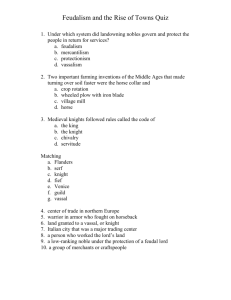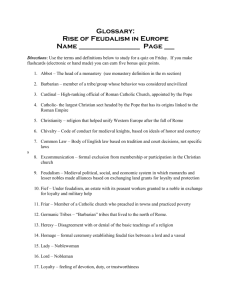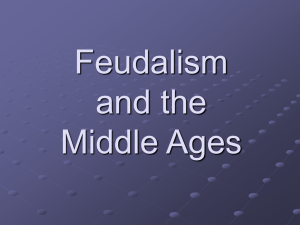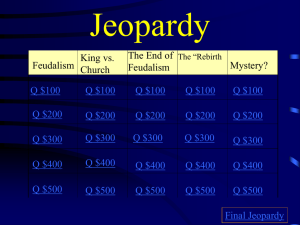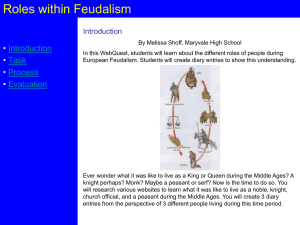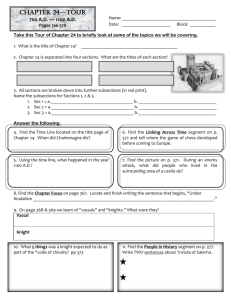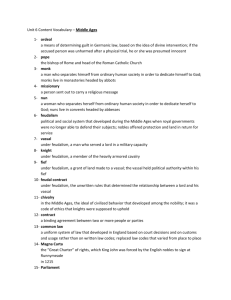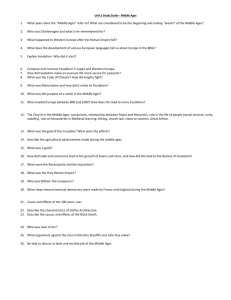Early Feudalism in Europe
advertisement
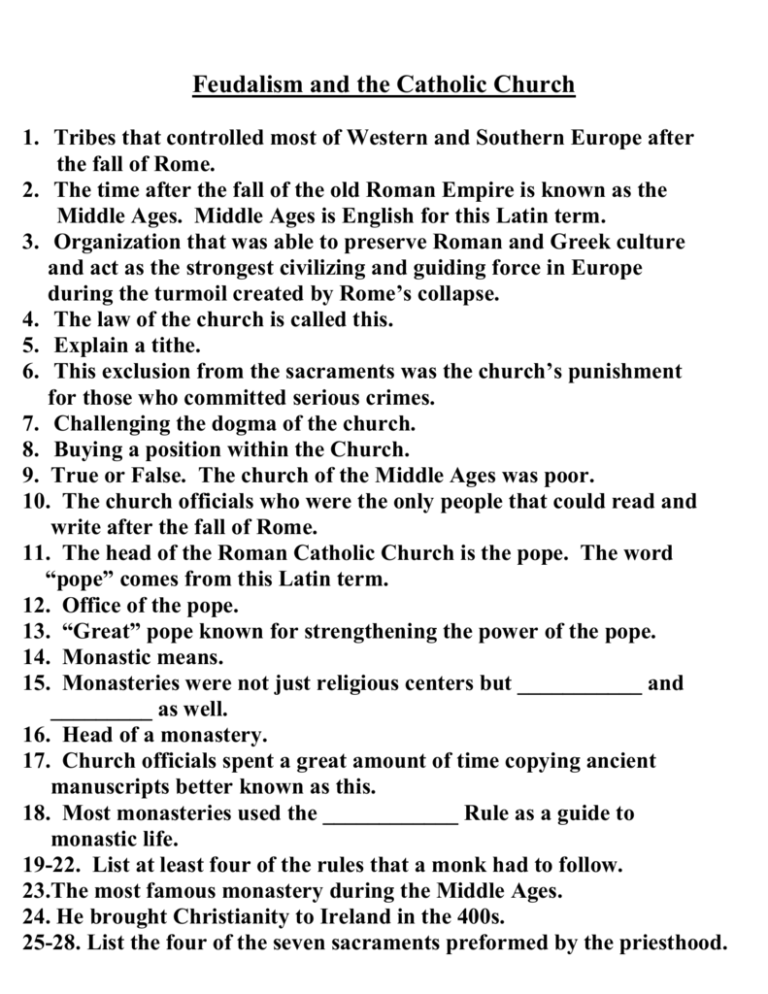
Feudalism and the Catholic Church 1. Tribes that controlled most of Western and Southern Europe after the fall of Rome. 2. The time after the fall of the old Roman Empire is known as the Middle Ages. Middle Ages is English for this Latin term. 3. Organization that was able to preserve Roman and Greek culture and act as the strongest civilizing and guiding force in Europe during the turmoil created by Rome’s collapse. 4. The law of the church is called this. 5. Explain a tithe. 6. This exclusion from the sacraments was the church’s punishment for those who committed serious crimes. 7. Challenging the dogma of the church. 8. Buying a position within the Church. 9. True or False. The church of the Middle Ages was poor. 10. The church officials who were the only people that could read and write after the fall of Rome. 11. The head of the Roman Catholic Church is the pope. The word “pope” comes from this Latin term. 12. Office of the pope. 13. “Great” pope known for strengthening the power of the pope. 14. Monastic means. 15. Monasteries were not just religious centers but ___________ and _________ as well. 16. Head of a monastery. 17. Church officials spent a great amount of time copying ancient manuscripts better known as this. 18. Most monasteries used the ____________ Rule as a guide to monastic life. 19-22. List at least four of the rules that a monk had to follow. 23.The most famous monastery during the Middle Ages. 24. He brought Christianity to Ireland in the 400s. 25-28. List the four of the seven sacraments preformed by the priesthood. Medieval Life 29. 30. 31. 32. 33. Describe the scale (size) of warfare in the Middle Ages. The church provided rules for war, describe the rule called the “peace of God.” The church provided rules for war, describe the rule called the “truce of God.” Compurgation means clearing an accused person by taking an ___________. In a trial by ordeal, an accused person would have to retrieve an object at the bottom of boiling water. How was that person then proven innocent or guilty? 34. Purpose of a castle. 35. Water-filled ditches around a castle. 36. A trained, mounted warrior. 37. A knight was expected to defend the ___________ and its laws. 38. A knight’s code of behavior. 39. List three things that a knight was required to be due to his code. 40. Young boys who learned simple concepts on being a knight. 41. A knight assistant in training to become a knight. 42. Agreement that held feudalism together. 43. The key to feudalism was the granting of land, the land is known as this. 44. A noble who granted land. 45. A person who received the land from a noble. 46. A person who received land from a noble gave this in return. 47. Poor farmer. 48. A large estate, it was the economic side of feudalism. 49. Untilled land. 50. Gift that a women’s family would pay as part of a marriage.
